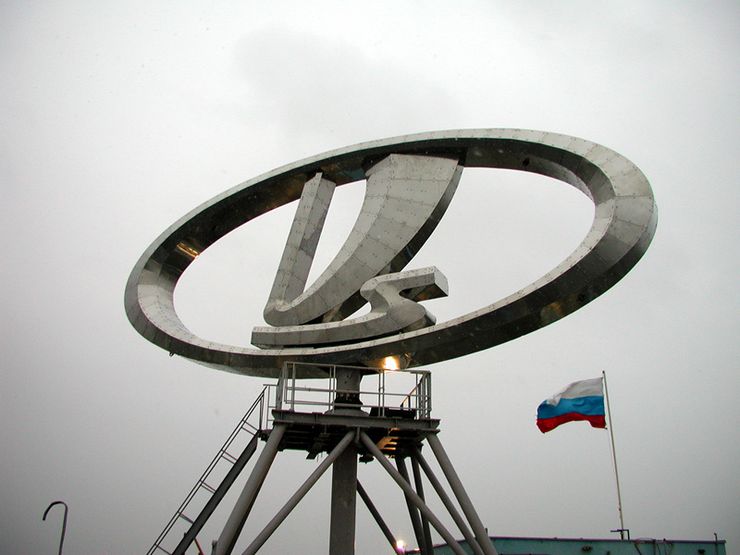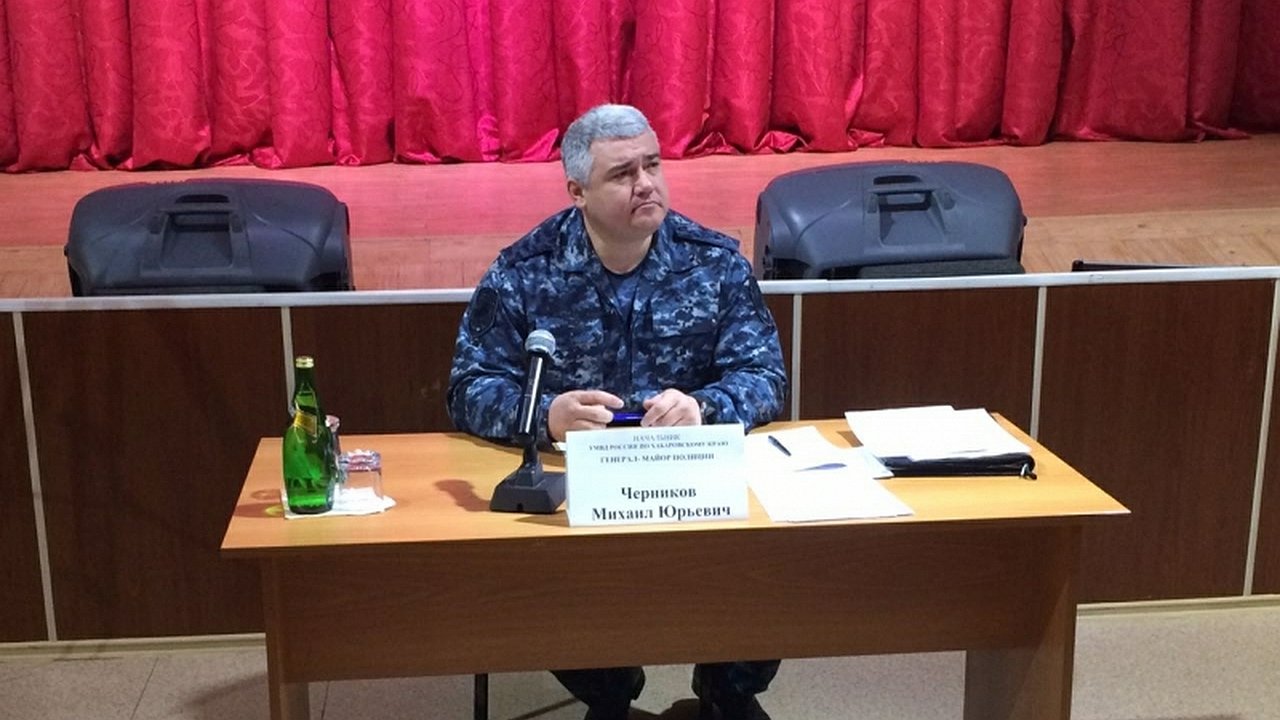During the plenary session of the VIII Eastern Economic Forum, Russian President Vladimir Putin said that Russian officials should drive cars produced by the domestic auto industry. It’s interesting: was it reported to the leader of the nation that Russia could only produce its own vehicles in the “carburetor era”?
This social demand has always existed among millions of Russians: to see how domestic officials of all ranks drive every day not in premium German foreign cars, but in their native LADA and UAZ. It seems that you and I will be able to “live in these wonderful times.” Relatively recently, among other measures to support the Russian car manufacturer, Vladimir Putin has expressed the idea of transferring the country’s official fleet to “our brands.” Characteristically, it appears that they are not going to shorten the course towards ‘Russification’ of the state vehicle fleet. GDP raised the same topic again during his speech at the VIII Eastern Economic Forum.
— We need to build a certain chain of ‘who gets what’ and drive domestic cars. They may look more modest than Mercedes or Audi, but we must follow the example of our partners in India. They are mainly focusing on using vehicles made in India,” he said.
How do most of us now experience the transfer of civil servants to Russian cars? Foreign cars are taken from them and in return they receive LADA Granta and Vesta. The sight of the minister walking through Moscow in the morning rush hour in his personal Grant will warm the souls of all witnesses to such a manifestation of social justice with a malevolent warmth. And so that there are no tricks when purchasing “Chinese”, assembled in Russia under domestic brands! Everyone knows that their “domestic production” consists of bolting wheels to finished cars imported from the Middle Kingdom.
It’s unfortunate, but we’re going to have to break this gloss of social justice in motor transportation.
Because even the products of the Togliatti car manufacturer are difficult to call truly Russian. According to various estimates, the actual localization rate of VAZ Granta and Niva is about 50%. And on average, this figure for the model range of our original Russian brand barely exceeds 30%.
For obvious reasons, the automaker itself does not publish such estimates. But this state of affairs is no secret to industry experts. Few people know, but until recently even banal door hinges (what could be simpler!?) for Vesta and Niva were delivered from Europe. What can we say about more complex nodes…
— The paradox is that at the moment we do not have a clear legislative formulation: which goods should be considered Russian. In nature, there is an “Agreement on the rules for determining the country of origin of goods in the CIS” dated November 20, 2009. There are some criteria there. But there is no clarity. For example: a product made from foreign raw materials is produced in Russia by a foreign company. Is this a domestic product or someone else’s? Or let’s take an engine cylinder block cast in a Russian factory from Russian cast iron and, for example, an electronic control unit – where a microcircuit brought from China was simply inserted into a plastic case in Voronezh. Both are formally ‘goods produced in the Russian Federation’. But only the manufacturer knows how much of it is actually Russian,” explains automotive industry consultant Sergei Burgazliev.
Someone will also remember the Haval factory in the Tula region. They stamp, weld and even paint the bodies of crossovers of the same name for the Russian market. Haval remained in Russia and has a fairly high localization score: about 1300 points according to the methodology of the Ministry of Industry and Trade. But whether his car can be considered a Russian product is another question. After all, the average point level for AVTOVAZ models is not much higher…
Let us note that in India, where President Putin called for a focus, the largest car manufacturers there – Tata Motors and Mahindra Auto – have, according to the most conservative estimates, a localization rate of passenger products much higher than 70%. And in the freight segment – more than 80%. We are as close to such indicators as we are to India, bent over. Especially since car manufacturers and officials of relevant ministries so far in the Russian Federation have not been able to develop even a hint of a program for creating their own full-fledged auto parts industry. It can be compared with the Indian one, at least in terms of the range of components manufactured.
This means that Putin’s call to focus on India will, at best, lead to the following. Low-level officials will start ‘dissecting’ Granta, half of which consists of imported spare parts. Senior officials will ride on Chinese cars assembled, for example, in Avtotor. And the country’s top management will use an Aurus fleet. I wonder if the cylinder-piston engine group of this marvel of domestic luxury technology is still supplied from Germany or what?
This social demand has always existed among millions of Russians: to see how domestic officials of all ranks drive every day not in premium German foreign cars, but in their native LADA and UAZ. It seems that you and I will be able to “live in these wonderful times.” Relatively recently, among other measures to support the Russian car manufacturer, Vladimir Putin has expressed the idea of transferring the country’s official fleet to “our brands.” Characteristically, it appears that they are not going to shorten the course towards ‘Russification’ of the state vehicle fleet. GDP raised the same topic again during his speech at the VIII Eastern Economic Forum.
— We need to build a certain chain of ‘who gets what’ and drive domestic cars. They may look more modest than Mercedes or Audi, but we must follow the example of our partners in India. They are mainly focusing on using vehicles made in India,” he said.
How do most of us now experience the transfer of civil servants to Russian cars? Foreign cars are taken from them and in return they receive LADA Granta and Vesta. The sight of the minister walking through Moscow in the morning rush hour in his personal Grant will warm the souls of all witnesses to such a manifestation of social justice with a malevolent warmth. And so that there are no tricks when purchasing “Chinese”, assembled in Russia under domestic brands! Everyone knows that their “domestic production” consists of bolting wheels to finished cars imported from the Middle Kingdom.
It’s unfortunate, but we’re going to have to break this gloss of social justice in motor transportation.
Because even the products of the Togliatti car manufacturer are difficult to call truly Russian. According to various estimates, the actual localization rate of VAZ Granta and Niva is about 50%. And on average, this figure for the model range of our original Russian brand barely exceeds 30%.
For obvious reasons, the automaker itself does not publish such estimates. But this state of affairs is no secret to industry experts. Few people know, but until recently even banal door hinges (what could be simpler!?) for Vesta and Niva were delivered from Europe. What can we say about more complex nodes…
— The paradox is that at the moment we do not have a clear legislative formulation: which goods should be considered Russian. In nature, there is an “Agreement on the rules for determining the country of origin of goods in the CIS” dated November 20, 2009. There are some criteria there. But there is no clarity. For example: a product made from foreign raw materials is produced in Russia by a foreign company. Is this a domestic product or someone else’s? Or let’s take an engine cylinder block cast in a Russian factory from Russian cast iron and, for example, an electronic control unit – where a microcircuit brought from China was simply inserted into a plastic case in Voronezh. Both are formally ‘goods produced in the Russian Federation’. But only the manufacturer knows how much of it is actually Russian,” explains automotive industry consultant Sergei Burgazliev.
Someone will also remember the Haval factory in the Tula region. They stamp, weld and even paint the bodies of crossovers of the same name for the Russian market. Haval remained in Russia and has a fairly high localization score: about 1300 points according to the methodology of the Ministry of Industry and Trade. But whether his car can be considered a Russian product is another question. After all, the average point level for AVTOVAZ models is not much higher…
Let us note that in India, where President Putin called for a focus, the largest car manufacturers there – Tata Motors and Mahindra Auto – have, according to the most conservative estimates, a localization rate of passenger products much higher than 70%. And in the freight segment – more than 80%. We are as close to such indicators as we are to India, bent over. Especially since car manufacturers and officials of relevant ministries so far in the Russian Federation have not been able to develop even a hint of a program for creating their own full-fledged auto parts industry. It can be compared with the Indian one, at least in terms of the range of components manufactured.
This means that Putin’s call to focus on India will, at best, lead to the following. Low-level officials will start ‘dissecting’ Granta, half of which consists of imported spare parts. Senior officials will ride on Chinese cars assembled, for example, in Avtotor. And the country’s top management will use an Aurus fleet. I wonder if the cylinder-piston engine group of this marvel of domestic luxury technology is still supplied from Germany or what?
Source: Avto Vzglyad
Donald Salinas is an experienced automobile journalist and writer for Div Bracket. He brings his readers the latest news and developments from the world of automobiles, offering a unique and knowledgeable perspective on the latest trends and innovations in the automotive industry.















